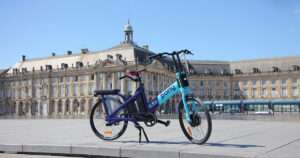Electric scooters are one of the most innovative inventions in mobility in recent years… Indeed, they have become, in a very short time, a very popular means of transport all over the world. And for good reason: they are practical, economical and ecological! In addition, they make it possible to cover the famous last mile and leave the car in the garage for short trips. However, despite their popularity, their use is becoming increasingly controversial and their presence in urban areas is attracting more and more criticism… Today, it even seems that they are gradually disappearing… Find out why some cities strictly regulate them and which cities are trying to get rid of them for good…
A justified reluctance to use these vehicles?
Safety is not good enough
Electric scooters are certainly fun and practical. However, they have serious drawbacks, mainly in terms of safety. Indeed, the rise of these machines has raised many concerns about the safety of pedestrians and cyclists. Moreover, municipalities have noticed a real increase in the number of accidents since their launch. The reason for this is that these electric vehicles are often used in a careless manner. Drivers drive on pavements, drive too fast or make dangerous maneuvers without taking other users into account. It is this careless behavior that has led to many accidents, some of them fatal. For many citizens, these electric vehicles create an increasingly uncertain urban environment…
London is a perfect example. In July 2022, a famous British yachtswoman and TV presenter died at the age of 35 while riding an electric scooter in the capital. Her death made the headlines and reignited the controversy surrounding these vehicles. In the UK, although they are becoming more common, they have never really been authorised. Thus, riding on the pavement or on the road is synonymous with an offence. However, in practice, the police are tolerant if users wear a helmet and drive at a slow speed.
Also in Rome, after repeated accidents, the city has introduced new rules for these machines. Rome has limited the speed of scooters to a maximum of 20 km/h and 6 km/h in pedestrian areas. In addition, it now limits the use of electric scooters to those over 18 years old and has reduced the number of operators in the city. Of the 7 operators initially present, only 3 are still operating.
Another example is Madrid. Earlier this year, the Spanish capital imposed new rules on users. People under 15 years of age must now be accompanied in order to ride an electric scooter. In addition, the speed limit is 30 km/h and helmets must be worn by those under 16 years of age, or they will be fined. Finally, the municipality has formally prohibited users from riding on bus lanes and pavements.
Permanent heap
The increasing use of electric scooters has also led to considerable clutter in public spaces. They are frequently abandoned on pavements, cycle paths and other public spaces. They impede the movement of pedestrians and particularly people with reduced mobility. In addition, operators of these services find it difficult to maintain control over how scooters are used and parked. Not surprisingly, this usually leads to chaos on the streets… However, some operators such as Bolt, TIER Mobility or Lime have equipped their scooters with GPS captures, thus forcing users to park them in the designated spaces. However, despite this, problems persist…
The growing number of electric scooters in cities makes it difficult to manage and monitor them. Operators often find it difficult to track their location in real time. As a result, some users take advantage of this and continue to leave scooters anywhere without respecting designated parking areas. In Paris, some electric vehicles have even been found in the Seine! Other European cities have recently taken more drastic measures. This is the case of Lisbon, which established no-parking zones on 1 July. Operators are liable to a fine of between 60 and 300 euros for each device left on the pavement.
A not so ‘green’ solution
Although self-service electric scooters are presented as a green alternative, their environmental impact is clearly underestimated. Firstly, these machines require the production and management of batteries, which have a significant environmental impact. In addition, the lifespan of these batteries is quite short. This leads to a lot of electronic waste, but also to a need for regular replacement, thus requiring new production… Obviously, electric scooters remain an interesting alternative to traditional means of transport such as the car. However, it is important to understand that their environmental impact is more complex than what one might think at first sight…
In summary, the main issues that threaten electric scooters in cities are safety, congestion of public space and their environmental impact. Operators have tried to limit these problems, but managing them remains a challenge. These problems could undermine the economic business of operators such as TIER, Bolt and Lime, especially as some cities have already taken much more radical decisions…
A total ban in some cities
In America
On the other side of the world, some cities have banned free-floating electric scooters outright. This is the case in Montreal, Canada. One of the reasons for this is the lack of respect by users for the regulations. Several American cities have also banned self-service electric scooters for safety and environmental reasons. This is the case of New York, which, even before their deployment, decided to ban the use of self-service electric scooters, and also of San Francisco: in December 2018. Finally, the city of Los Angeles has also banned self-service electric scooters on pavements in 2019, after repeated vandalism and a series of accidents involving pedestrians.
In Europe
In view of the number of accidents, some cities have gone further and decided to ban self-service electric scooters. This is the choice made by Barcelona and Valencia. Faced with mass tourism (around 30 million tourists per year), the Catalan capital has banned them since October 2017. The scooters brought in by the German company Wind at the end of August 2018 were removed after a few hours by the Barcelona police.
In Amsterdam, users of electric scooters are banned from riding on cycle paths. The local government has banned this practice for safety and environmental reasons. However, scooters can be rented for occasional use and users must park them in one of the city’s mobility hubs.
Paris bans scooters, what consequences for operators?
Recently, it was the city of Paris that announced a complete ban on electric scooters. Indeed, on April 2, 2023, Parisians were asked to vote on a possible ban on self-service scooters in the capital. After counting the votes, the verdict is in and scooters are set to disappear from Paris. The result is clear: 89% of voters who took part voted “against”. A figure to be put into perspective with a staggering 92% abstention rate. Thus, to say that this vote reflects the global will of Parisians is probably an easy shortcut. Especially since Lime, Dott and TIER, the three private operators, were quick to criticize the organizational conditions: one polling station per arrondissement, no proxy voting and no electronic voting.
However, the result remains the same. From 1 September 2023, Lime, Dott and TIER will have to withdraw all their machines. A considerable loss of almost 60 million euros in turnover over one year. If we take into account the 40,000 daily journeys made by free-floating scooters in Paris and the average price of a journey, at 4 euros. For the American leader, Lime, this represents almost 5% of its global turnover. This is far from insignificant.
However, one question remains… While electric scooters are now banned from the streets of Paris, what about other means of transport such as bikes, rollerblades and skateboards? These alternative modes of transport in the city also pose risks. They may be fast and agile, but the risks associated with their use include accidents, collisions with pedestrians, and injuries if they fall… One thing is certain, cyclists and other users must remain cautious and follow the traffic rules if they do not want these other modes of transport to suffer the same fate as electric scooters…





